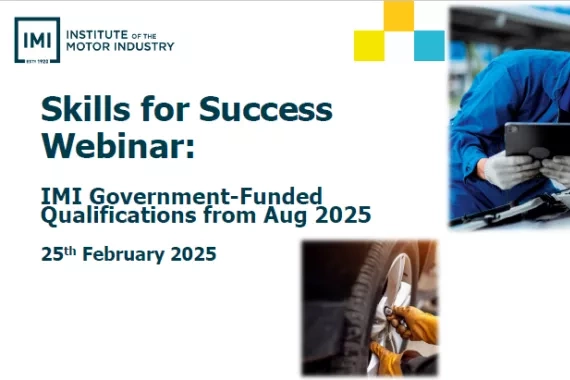In our recent webinar, Skills for Success: IMI’s Government-Funded Qualifications from 2025, we explored the latest government funding updates for 16–19 education and their implications for training providers. Following the Department for Education's announcement on 22 May 2025, here are the key highlights:
Enhanced Investment in 16–19 Education
The government is allocating an additional £160 million for colleges and other 16–19 providers in the 2025–26 financial year. Combined with over £30 million from the £615 million announced alongside the 2025–26 school teachers’ pay award, this brings the total additional funding to over £190 million for the 2025–26 academic year.
Key Funding Adjustments
- Increased Per-Student Funding Rate: To support high-quality delivery and address recruitment and retention challenges in a competitive labour market.
- Higher Programme Cost Weightings: Additional support for high-cost courses in priority sectors such as construction, manufacturing, and digital.
- Boosted English and Maths Funding: Enhanced resources for English and maths delivery, along with increased disadvantage funding to support learners needing to achieve a grade 4 in GCSE English and maths, including those in care and care leavers.
- Further details on funding rate increases and revised allocations are expected in June 2025, with updated payments commencing from the start of the 2025–26 academic year.
Strengthened Maths and English Requirements
Starting in the 2025–26 academic year, institutions must provide a minimum of 100 hours each of in-person, whole-class, stand-alone teaching for English and maths. Additionally, the tolerance for non-compliance with the maths and English condition of funding will be reduced from 5% to 2.5%, impacting funding allocations in the 2027–28 academic year.
Revised National Funding Rates
The national funding rate for students aged 16 and 17, as well as students aged 18 and over with high needs in band 5, has been increased to £5,026. Other funding bands have been adjusted proportionately.
For a comprehensive understanding of these changes, we encourage you to review the full government guidance linked above.
If you missed our webinar or wish to revisit the discussion, a recording is available.
Stay tuned for further updates in our upcoming newsletters.


